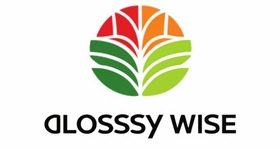1. Conversion Rates
– Importance: The Conversion Rate is a clear indicator of campaign success. A high conversion rate signifies that your marketing efforts resonate with and inspire your audience to take action.
– Optimizing: Marketers can use analytics to test different things in their campaigns, for example, call to actions, layout, images, copy, to try to get better conversion rates. Customized for the target audience, this could really up the chances of getting a conversion.
2. Customer Acquisition Cost (CAC)
– Relevance: CAC is one of the most important variables used to measure the economic efficiency of marketing campaigns. It helps businesses understand the cost implications of acquiring new customers and managing budget allocations.
– Optimization: Reducing CAC includes optimizing the marketing strategies and sourcing for more cost-effective channels to acquire the customers. Analytics can point toward less expensive channels or more efficient methods of reaching potential customers.
3. Customer Lifetime Value (CLV)
– Importance: CLV is important to long-run business strategy because it represents the future profit a business can expect from a customer over the life of their relationship.
– Optimization: Increasing the CLV would involve making product offerings better, improving services to the customers, and putting in place loyalty programs. Analytics helps identify what customers value most, tailoring approaches to increase satisfaction and retention rates.
4. Return on Investment (ROI)
– Relevance: ROI is one of the most direct ways to measure how effective marketing campaigns are at returning profits. Businesses then know the type of campaign to invest in and that they should not.
– Optimization: Analytics can continuously track and measure the performance of different marketing initiatives in order to reallocate budgets into the most efficient campaigns, thus optimizing ROI.
5. Metrics of Engagement
– Importance: Engagement metrics show how interesting and relevant the content is to the users. High engagement implies very good user resonance and can improve loyalty toward the brand while influencing conversion rates.
– Optimization: Making content more engaging sometimes means looking at metrics and understanding what forms of content work best. For example, video content could engage better than text, or interactive posts may provoke more comments and shares.
Tools and Techniques in Analyzing Marketing Data have Expanded
1. Google Analytics
– Features: This allows you to take careful follow-ups of your user’s interaction with the website, like the pages they have viewed, the time they spent on the website, and the course that the user followed through the site.
– Application: Understand the user paths and find potential barriers that can be causing drop-off from the site, so that layout and content can be optimized.
2. Social Media Analytics
– Capabilities: This analytics can give an idea of the reach, likes, shares, and comments post-publishing, but also highlights demographic information of the audience.
– Application: Marketers could use this information to personalize the content on social media more, aligning with the interests and behaviors of the target audience for enhanced engagement and effectiveness.
3. A/B Testing
– Capabilities: A/B testing can compare the effectiveness of different web pages, emails, or ads in driving success.
– Application: Consequent application of A/B testing in marketing elements leads to improved user experience, which boosts conversion rates over time.
4. Heatmaps
– Functionality: The heat maps show visual representations of where users click, how far they scroll, and what they ignore.
– Application: With such insights, it becomes possible for businesses to place their key content or calls to action in optimum locations on their web pages within those sections likely to get the most attention.
5. Customer Relationship Management (CRM) Systems
– Capabilities: CRMs are able to track all interactions taking place with the current and potential customers and integrate such data from different channels for segmenting the customers.
– Application: This holistic perspective enables businesses to conduct personalized marketing, foreseeing future trends, and retain most beneficial customers by understanding and reacting to their needs more lucratively.
Additional Challenges in Adopting Analytics
1. Information Overload Mitigation: Robust data management strategies, such as data warehousing, and the deployment of dashboards calling out critical metrics help keep the program focused on key data points.
2. Data Quality Mitigation: Regular data cleansing, validation of data collection methods, and good training practices for the staff can greatly improve the accuracy and reliability of data.
3. Skill Gap Mitigation: By the investment of training programs in up-skilling employees or the hiring of specialists in data analysis, this gap can be bridged, and the full potential of analytics can be realized.
Understanding and implementing these expanded insights can significantly enhance a company’s ability to measure and improve the effectiveness of its marketing strategies, ensuring that they not only reach their target audience more effectively but also drive meaningful engagement and sustained growth.

